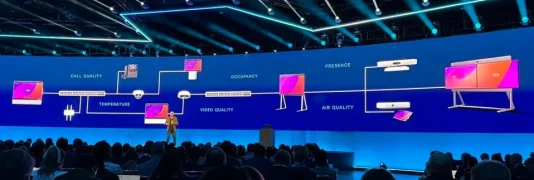- “Never worked before”: Convertible PCs have been around for a while now and have sold into targeted vertical markets like healthcare, education and sales, but haven’t sold to wide-spread audiences in mass volumes.
- “Can’t be all things to all people”: This line of logic says that a device cannot be a good tablet and a good clamshell notebook. This makes sense at face value, especially when you look at examples like Heelys. They don’t make great shoes or a decent pair of roller skates you would take to the roller skating rink. Other examples are why all cars aren’t convertibles and all jackets don’t have zip-off sleeves.
- “Too chunky and heavy”: People point to designs with non-detachable displays that are, in fact, thick compared to a thin a light notebook.
- “Too expensive”: This line of logic says that you will need to pay a major premium to have this functionality.
- “I/my company’s users want a tablet because they are cool, but I need a notebook, but I don’t want both.”
- “I/my company’s users want a tablet and need a notebook, but I/we cannot afford both.”
- Mac Air: 17 mm at its thickest point on an 11.6” design
- iPad 1: 13.4 mm
- Asus Transformer: 12.98 mm thick, without keyboard
- IPad 2: 8.8 mm at its thickest point
- Apple Keyboard: ~5 mm thick
- tablet (10mm) +
- keyboard (5mm) +
- torsion control and connector adder (3mm)
- Windows 8: At D9, I personally witnessed the new OS incorporating elements of tablet and notebook in the same platform. Yes, the multi-modality created some discussion and controversy, but it is coming.
- Android: My Asus Transformer, albeit having Honeycomb challenges, delivers a decent tablet and clamshell experience today. It can only get better from there, right? Judging from some of the news to come out at Google I/O in May, Ice Cream Sandwich will incorporate elements of tablets and clamshells. Imagine a single .apk for phone, tablet, and clamshell device.
- Apple: If OS/X and iOS share a common kernel, is it impossible to imagine unification on a convertible device? I certainly noticed many common UI elements between Lion and iOS 5, did you?
- Clamshell mode (tablet + keyboard): Fonts, bars, and buttons get smaller and more appropriate for a precision UI environment.
- Tablet mode: Fonts, bars, scale larger for an imprecise, finger-driven UI environment
Patrick founded the firm based on his real-world world technology experiences with the understanding of what he wasn’t getting from analysts and consultants. Ten years later, Patrick is ranked #1 among technology industry analysts in terms of “power” (ARInsights) in “press citations” (Apollo Research). Moorhead is a contributor at Forbes and frequently appears on CNBC. He is a broad-based analyst covering a wide variety of topics including the cloud, enterprise SaaS, collaboration, client computing, and semiconductors. He has 30 years of experience including 15 years of executive experience at high tech companies (NCR, AT&T, Compaq, now HP, and AMD) leading strategy, product management, product marketing, and corporate marketing, including three industry board appointments.
- Patrick Moorheadhttps://moorinsightsstrategy.com/author/phfmphfmgmail-com/
- Patrick Moorheadhttps://moorinsightsstrategy.com/author/phfmphfmgmail-com/
- Patrick Moorheadhttps://moorinsightsstrategy.com/author/phfmphfmgmail-com/
- Patrick Moorheadhttps://moorinsightsstrategy.com/author/phfmphfmgmail-com/






















































































